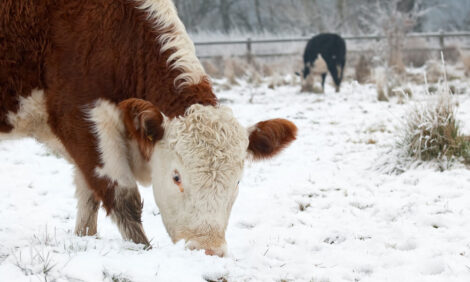



Plants Host Pathogenic Bacteria from Livestock Farming
NETHERLANDS - Disease-causing bacteria resulting from livestock farming can contaminate food products and find their way to humans.This occurs remarkably effectively via plants, which explains why recent outbreaks due to infection with EHEC and other E. coli and Salmonella strains are regularly attributed to the consumption of fresh vegetables. These are the findings of researchers from Wageningen UR (University & Research centre), who carried out a literature study on outbreaks like the EHEC one.
EHEC outbreak in Germany
In the spring of 2011 EHEC bacteria caused an outbreak in northern Germany. The source of infection, with an unusual variant of Escherichia coli, turned out to be fenugreek, a seed sprout many restaurants use to decorate food. This particular outbreak resulted in a number of deaths and led to numerous investigations into the relationship between these bacteria and the consumption of sprouted and seedling vegetables.
The research showed that the pathogens involved were remarkably good at surviving on products of plant origin. In other words, the ‘traditional’ route to humans via meats, eggs or dairy products must be extended to include plants and products containing plants. Even more worrying: these human pathogens can adapt themselves to plants and their direct environment without losing their ability to cause illness in humans.
Microorganisms on plants
Since the EHEC outbreak, almost 200 studies into its causes and background have been published. Researchers at Wageningen have summarised the results in a literature review, which has demonstrated that some pathogenic bacteria can reside in or on plants for long periods. This means a higher risk of transmission to humans.
The researchers believe these microorganisms survive such a long time on plants because they have acquired genes from other microorganisms – those that normally occur in the soil, in manure or in irrigation water. In particular, the researchers hold bacteriophages (virus-like particles that only infect bacteria) and plasmids (independent pieces of DNA present in bacteria) responsible for gene transmission to human pathogens on or in plants. More research is needed to confirm this suspicion.
Development of new detection systems
This new discovery is important for understanding how human pathogens adapt themselves to plants. A study of the transmitted genes in outbreak strains could lead to the development of new detection systems, and thus a quicker and more effective estimation of the risks to consumers. This would also ensure more accurate information is supplied during new outbreaks.
TheCattleSite News Desk


